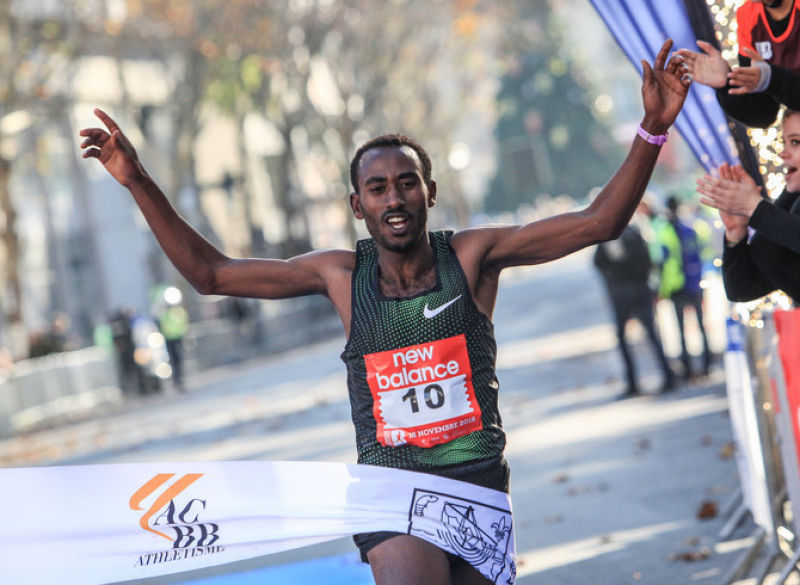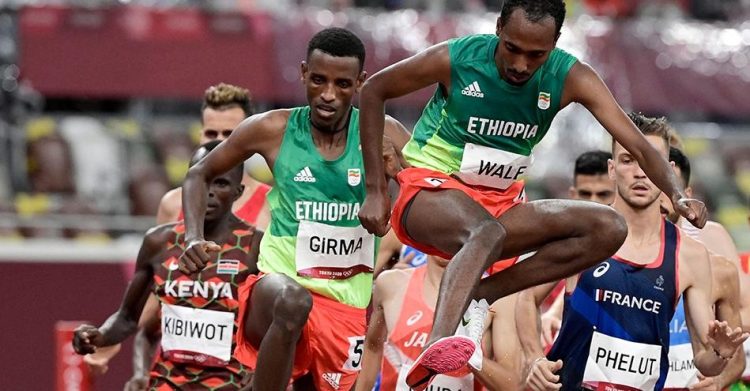The History of Girma Runner

The Girma Runner, a unique and innovative running shoe, has a fascinating history that reflects the evolution of athletic footwear and the pursuit of performance enhancement. Its origins can be traced back to the early 20th century, when the concept of specialized running shoes was just beginning to emerge.
The Origins of the Girma Runner
The Girma Runner was conceived in the early 1900s by a visionary shoemaker named Girma. Girma, a passionate runner himself, was dissatisfied with the limited options available to athletes at the time. Traditional shoes, often designed for everyday wear, lacked the support, cushioning, and flexibility necessary for optimal running performance. Girma believed that a shoe specifically designed for running could revolutionize the sport.
Girma’s vision was driven by a deep understanding of the biomechanics of running. He observed how the foot moved during the stride and recognized the importance of providing adequate support and cushioning in key areas. He also experimented with different materials and construction techniques to create a shoe that was both durable and comfortable.
After years of research and development, Girma finally unveiled his creation: the Girma Runner. This groundbreaking shoe featured a lightweight, flexible upper, a supportive midsole designed to absorb shock and provide stability, and a durable outsole with a unique tread pattern for optimal grip. The Girma Runner was an instant success among runners, who praised its comfort, performance, and innovative design.
The Evolution of the Girma Runner
Over the decades, the Girma Runner has undergone significant evolution, reflecting advancements in materials, technology, and the understanding of running biomechanics. Some key changes include:
- Introduction of Synthetic Materials: Early versions of the Girma Runner were primarily made from leather. However, the development of synthetic materials, such as nylon and polyurethane, allowed for lighter, more breathable, and more durable shoes. This innovation significantly improved the performance and comfort of the Girma Runner.
- Advancements in Cushioning Technology: The midsole of the Girma Runner has evolved to incorporate advanced cushioning technologies. Early versions used simple foam materials, while later iterations introduced gel inserts, air pockets, and other innovative solutions to provide superior shock absorption and impact protection.
- Improved Outsole Design: The outsole of the Girma Runner has also undergone significant refinement. The original tread pattern has been adapted to optimize grip on different surfaces, from asphalt to trails. The use of high-performance rubber compounds has also enhanced durability and traction.
Early Use and Anecdotes
The Girma Runner quickly gained popularity among runners of all levels. It was worn by elite athletes who sought to break records, as well as by recreational runners who simply wanted a comfortable and supportive shoe. The shoe’s reputation for quality and performance led to its adoption by several prominent running clubs and organizations.
One particularly notable anecdote involves a young runner named John, who was struggling to overcome an injury. He had been advised by his doctor to avoid running for several months, but he was determined to return to the sport. John decided to try the Girma Runner, hoping its cushioning and support would help him recover. To his surprise, the shoe allowed him to run comfortably and pain-free, and he was able to gradually increase his training mileage. John’s experience became a testament to the Girma Runner’s ability to support runners at all levels, from beginners to elite athletes.
Types and Applications of Girma Runner

Girma Runners, also known as conveyor belts, are essential components in various industries, facilitating the efficient transportation of materials. They are categorized based on their design, functionality, and application, each offering unique advantages and capabilities. This section will delve into the different types of Girma Runners and explore their diverse applications across various sectors.
Types of Girma Runners
Girma Runners are broadly categorized based on their design and material.
- Belt Type: This classification focuses on the material used for the belt, determining its properties and suitability for different applications.
- Rubber Belts: These belts are widely used due to their flexibility, durability, and resistance to abrasion. They are suitable for transporting various materials, including bulk materials, packaged goods, and finished products. Examples include rubber belts used in mining operations for transporting ore and coal, as well as those used in food processing for transporting raw ingredients and finished products.
- Plastic Belts: Plastic belts are lightweight, corrosion-resistant, and suitable for applications requiring hygiene and cleanliness. They are commonly used in the food and pharmaceutical industries for transporting delicate products and materials. For instance, plastic belts are used in food processing plants for transporting food products, ensuring minimal contamination and adherence to hygiene standards.
- Metal Belts: Metal belts offer high strength and durability, making them suitable for heavy-duty applications involving high temperatures or abrasive materials. They are commonly used in industries like steel manufacturing, where they transport hot metal billets or slabs, and in mining operations for transporting heavy ores.
- Construction Type: This classification focuses on the design and construction of the belt, determining its functionality and application.
- Flat Belts: Flat belts are the most common type, characterized by their flat surface and simple design. They are used for transporting materials horizontally or slightly inclined. They are suitable for various applications, including transporting packaged goods, raw materials, and finished products. Examples include flat belts used in warehouses for transporting pallets and boxes, as well as those used in packaging lines for transporting finished products.
- Modular Belts: Modular belts are made up of interconnected modules, offering flexibility and adaptability. They are commonly used in applications requiring specific configurations or changes in direction. Modular belts are often used in food processing, packaging, and assembly lines, allowing for adjustments to accommodate different product sizes and shapes.
- Spiral Belts: Spiral belts are designed for transporting materials vertically or at a steep incline. They are commonly used in applications requiring efficient vertical movement, such as in ovens, dryers, and cooling systems. Examples include spiral belts used in bakeries for transporting bread dough through ovens, as well as those used in food processing for drying and cooling products.
Applications of Girma Runners
Girma Runners find applications across various industries, playing a crucial role in material handling and transportation. Their versatility and adaptability make them essential for efficient and cost-effective operations.
| Type | Industry | Application | Benefits |
|---|---|---|---|
| Rubber Belt | Mining | Transporting ore, coal, and other materials from extraction points to processing facilities | High durability, resistance to abrasion, and ability to handle heavy loads |
| Plastic Belt | Food Processing | Transporting food products, ingredients, and packaging materials through processing lines | Hygiene and cleanliness, resistance to corrosion, and suitability for handling delicate products |
| Metal Belt | Steel Manufacturing | Transporting hot metal billets and slabs through rolling mills and other processing stages | High strength, heat resistance, and durability for handling heavy and hot materials |
| Flat Belt | Warehousing | Transporting pallets, boxes, and other materials within warehouses and distribution centers | Simplicity, efficiency, and suitability for horizontal or slightly inclined transportation |
| Modular Belt | Packaging | Transporting products through packaging lines, accommodating different product sizes and shapes | Flexibility, adaptability, and ability to change configurations for specific product requirements |
| Spiral Belt | Baking | Transporting bread dough through ovens, ensuring even heating and consistent baking | Efficiency in vertical transportation, suitability for high-temperature applications, and ability to handle delicate products |
Girma Runner, known for his speed and agility on the track, might not immediately come to mind when thinking about furniture. But imagine him settling into a comfortable antique leather executive chair after a grueling race. The rich leather and timeless design would surely provide the perfect blend of support and luxury, allowing him to relax and reflect on his performance.
Girma Runner, known for his speed and endurance, often finds himself seeking a moment of relaxation after a grueling training session. He prefers to unwind in a comfortable spot, like a large leather chair with ottoman , where he can stretch out his tired legs and soak in the tranquility of his surroundings.
This allows him to recharge and prepare for his next challenging run.